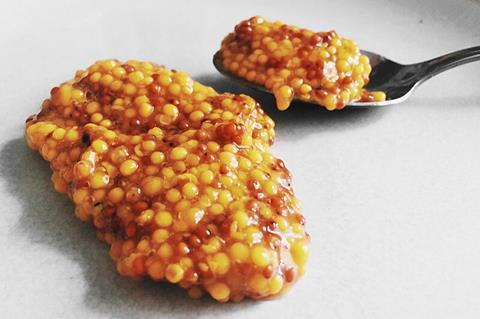Serious wine drinkers often have their preferences: some prefer sweet hints of chocolate in a Malbec from Argentina, while others are drawn to a spicy and fruity Cabernet Sauvignon from Napa Valley. Wine connoisseurs firmly believe that the soil in which grapes are grown determines how it tastes.

But can microbes in the soil also contribute to taste? In a recent study published in New Phytologist, former PhD student Corrine Walsh at the Cooperative Institute for Research in Environmental Sciences (CIRES) at the University of Colorado Boulder and CIRES Fellow Noah Fierer ran one of the first experiments to figure out if soil microorganisms like bacteria and fungi influence the flavor of a crop. Their target: the spiciness of mustard seeds.
“I thought that was an interesting question,” Walsh said. “We know microbes and plants communicate via chemicals—could those chemicals impact plant flavor?”
Flavor mystery
Previous research has confirmed that soil properties influence plant characteristics like growth, seasonal cycles, disease resistance, and nutrient absorption. What remains a mystery is whether or not soil microbes influence a plant’s flavor. Testing for this is difficult—past studies have surveyed plants grown in different locations and regions, making it tricky to isolate the role of microbes alone.
“It is often claimed that the types of microbes found in soil should influence crop flavor,” said Fierer, who’s also a professor at the Department of Ecology and Evolutionary Biology. “We set out to test this claim, but it wasn’t easy—soil microbes are tough to study.”
Walsh and Fierer decided to take a unique approach: They used a greenhouse study and grew mustard plants while inoculating the plants with a liquid inoculum of microbes from soils in aspen groves, fields of sagebrush, ponderosa pine forests, and agricultural pastures, all in Colorado. The potting soil, temperature, watering, and nutrients were held constant—only the microbes varied.
Secret of glucosinolates
They chose mustard because it’s easy to grow. Mustard is a part of the Brassica family which includes broccoli, cabbage, and horseradish—spicy and bitter vegetables. These spicy and bitter flavors, and the spicy flavor of mustard seeds, all come from glucosinolates, chemicals that help Brassica plants defend against insects and pests.
“When you cook them they have that kind of sulfury smell,” Walsh said. “The glucosinolates have a sulfur compound in them, and that’s what you’re smelling when you cook.”
After harvesting the mustard seeds, the researchers tested for spiciness. And no, the results didn’t rely on a taste test. Rather, they measured glucosinolate concentrations in the mustard seeds to observe different flavor chemicals.
Diverging microbiomes
But, Walsh found, controlling biology is hard.
“The way the microbiomes diverged over time throughout the experiment made it hard to test some of our hypotheses of microbes affecting flavor,” said Walsh. “We found a relationship between the microbiome and seed chemistry, but the direction and mechanism of that relationship remain unknown.”
In short, researchers concluded there is some evidence of a relationship between microbes and the spiciness of mustard, but why mustard gets spicier in response to certain microbes remains unknown. However, the work is an important contribution as it adds to our understanding of the myriad ways soil microbes can influence plants.
“We do now know that microbes are worth considering in this venue,” Walsh said. “There is excitement about using microbial inoculants (“probiotics”) to do other things for crops, like protect against drought, or increase productivity. Maybe those products are impacting flavor as well.”







No comments yet